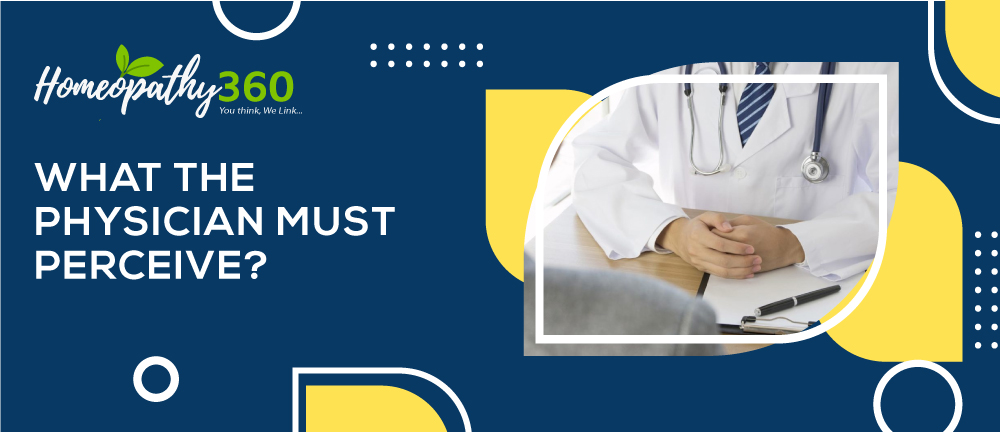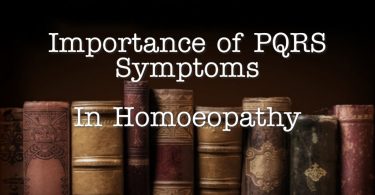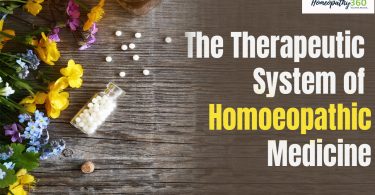
ABSTRACT
This article encompasses Kent’s frame of reference concerning the significance of a physician’s discernment during case taking as per Lectures of homoeopathic philosophy.
INTRODUCTION
“You perceive something when you become aware of it through the senses”
A homoeopathic physician not just sees but perceives.
A physician should perceive what is curable in disease, curative in medicine hence he understands the individuality of the patient through holistic approach to cure.
In agreement with Hahnemann in aphorism 3- “If the physician clearly perceives what is to be cured in diseases, that is to say, in every individual case of disease: if he clearly perceives what is curative in medicines that is to say, in each individual medicine; and if he knows how to adapt, according to clearly-defined principles, what is curative in medicines to what he has discovered to be undoubtedly morbid in the patient, so that recovery must ensure-to adapt it as well in respect to the suitability of the medicine most appropriate according to its mode of action to the case before him, as also in respect to the exact mode of preparation and quantity of it required, and the proper period for repeating the dose; if finally, he knows the obstacles to recovery in each case and is aware how to remove them so that the restoration may be permanent: then he understands how to treat judiciously and rationally, and he is a true practitioner of the healing art”
Hahnemann had a deep vision when he used the word perceive instead of see in view of the fact that See means to notice or become aware of someone or something by using your eyes and perceive means to attain awareness or understanding.
This chapter is bacon of light for the physician of this generation to appreciate Kent’s point of view as he elucidated through the points below.
Pathological changes or end results are not the curative indications
- Tumors, a part of organ, albumin, or sugar in the urine are the pathological changes and the removal of these morbid anatomies is not the curative indication.
- Hahnemann did not look upon pathological changes or morbid anatomy as that which in disease constitutes the curative indication.
The Totality of symptoms are the curative indications in each case.
- Hahnemann defined the totality of symptoms in aphorism 7 as the outwardly reflected picture of the internal essence of the disease, that is, of the affection of vital force.
- The results of disease occurring in the tissues in the chronic disease such as cancerous changes, tumors, etc cannot constitute curative signs. But the physician must know the things which are curable, which are capable of changing, which can be materially affected by the administration of the remedies.
In support of Kent, in aphorism 16, Hahnemann stated;
“……..after the changes in the health of the patient cognizable by our senses (the TOTALITY of the symptoms) have revealed the disease to the carefully observing and investigating physician as fully as was requisite to enable him to cure it”
To perceive what is to be cured in disease one must proceed from general to particular
- To perceive disease properly a homoeopath should understand that disease starts from within. And disease progress from center to circumference
- Every government is from center to circumference. Whenever the system of central political government is not bowed to, anarchy and loss of confidence prevail.
- Even the spider entrenches himself in his web and governs his universe from the center.
- In man, the center of government is in the cerebrum, and from it, every nerve cell is governed. All actions take place for good or evil, for order or disorder, and from it, the disease begins the healing process. It is not from external things that man becomes sick, not from bacteria or the environment but causes in himself.
- Disorder in the vital economy is the primary state of affairs, and this disorder manifests itself by signs and symptoms.
- Government governs the organism or the man in health/disease and Law is the direction of disease progression or cure.
Like in cases of the epidemic, homoeopaths should proceed from collective image to individualistic features to understand disease.
- A collective image of the disease should be formulated through observing, noting down, and arranging the symptoms of the sick.
- According to Dr. Kent, “Every symptom is indicative of a deviation from the normal state of health”
Pathognomonic symptoms are the general symptoms of the disease which help in the diagnosis
- Pathognomonic symptoms(Symptoms found in almost all the patient) is the symptom that is common to a disease state.
- Peculiar symptoms(Symptoms confined to some/few individuals) and is peculiar in their nature and character. These are the symptoms upon which prescription has to be based.
Each patient has a certain state of peculiarities also every remedy has certain peculiarities and only in this way the remedy can fit the patient
- The collective image of the sick constitutes the totality. The physician should go through materia medica and match with individual/specific symptoms to select a select the specific remedy
- This is the only way the homoeopath can proceed
While understanding medicines or what is curative in medicines one should also proceed from general to particular
- General – regarding the whole human race/ most of the patients or the most general features. Particular- on the particular individuals or the peculiarities of the disease which are not found in most of the patients
- The physician must no longer pass through the names of the ailment
- The physician should be well versed in the nature of the disease
When a physician understands the nature of the disease and the list of the remedies he becomes skillful
- When the physician understands the nature of the disease, When he understands the nature of the remedies, then by just listening to the symptoms of a sick man, the remedies will come to his mind instantly.
In accordant with aphorism 27 in 6th edition of organon of medicine,
“The curative power of medicines, therefore, depends on their symptoms, similar to the disease but superior to it in strength, so that each case of disease is most surely, radically, rapidly, and permanently annihilated and removed only by a medicine capable of producing most similarly and completely the TOTALITY of its symptoms, which at the same time are stronger than the disease”
A proper understanding and evaluation of the signs and symptoms enable the physician to have an undistorted image that he can readily match with a similar image from the homoeopathic materia medica.
CONCLUSION
Quoting Andy Warhol, “Perception precedes reality” .The destiny of a case is relied on how the physician intends to perceive it, predominantly in a homoeopathic case taking where the case is not merely a disease but the patient as a whole. No matter how rare and peculiar the symptoms are, if the physician is reluctant to perceive it, the case will not receive justice. The physician’s high and only mission is to restore the sick to health to cure as it is termed.
REFERENCES
1 Kent J. Lectures on homoeopathic philosophy. New Delhi: B. Jain Publishers; 2002.
2 Hahnemann S, Boericke W. Organon of medicine.
3. Dhawale M. Principles & practice of homoeopathy. Mumbai: Reprographic Ventures; 2008.
DR RIYA SUSAN GEORGE
PG SCHOLAR
DEPARTMENT OF ORGANON OF MEDICINE AND HOMOEOPATHIC PHILOSOPHY.
FATHER MULLER HOMOEOPATHIC MEDICAL COLLEGE . MANGALORE





